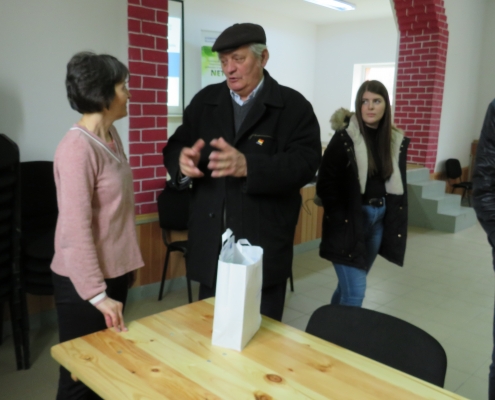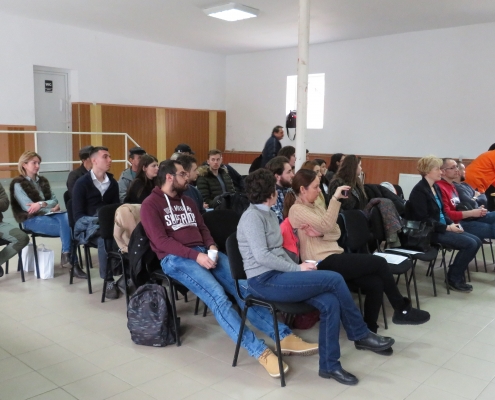Thursday, March the 5th, 2020 the Cultural Center Sasca Română from the village Sasca Montană (Caraș-Severin county) hosted a new workshop as an activity of the project “Forming of network for enhancing environmental protection from pollutants of mining cross border areas”, acronym NETMIN, eMS no. RORS-308, within the framework of the Interreg-IPA Cross-border Cooperation Romania-Serbia Programme. The participants, representatives of local authorities, inhabitants from the region but also students and young researchers engaged in the project, had the opportunity to find out, first-hand, social, economic and environmental aspects of mining activities in the region. Also, they received valuable information regarding the pollution with heavy metals, the effects of pollution on human health and the solutions for applying green technology to decontaminate soils polluted due to mining activities, tested around the world.
Mr. Ion Poplicean, the mayor of Sasca Montană, welcomed the participants and presented the tradition of mining activities in the region. Also, he tackled the issue of ecologic measures taken to restore degraded soils, measures possible due to prior accessed projects.
Assoc. Prof. dr. Eng. Cornelia Muntean (Politehnica University Timisoara), project manager, presented the principles and aims of the project, inviting the participants to join the research-education-action network and to engage in enhancing the measures for protecting the environment and for fighting the pollution caused by mining activities.
Mrs. Eng. Ana Kostov (the Mining and Metallurgy Institute Bor, Serbia), responsible for communication, presented the impact a century of copper mining produced on the soil in Bor area. Also, she highlighted the efforts her Serbian team bring to the project, ensuring a cross-border view on environmental protection and sustainable use of natural resources.
The official and scientific presentations were supplemented by the story of a worker in the former mine from Sasca, who presented his experience of living and working in an active mine for a long time.
After the presentations, participants in the workshop visited the village, the former mine facilities and took soil samples, to test the type of pollution and, depending on the results, to recommend phytoremedial solutions appropriate for the area.

















